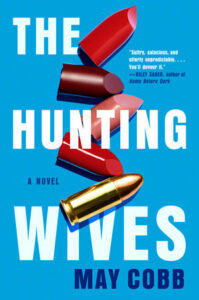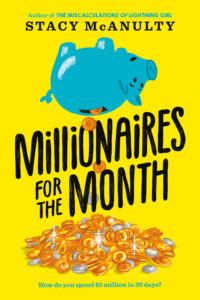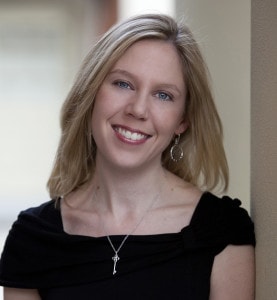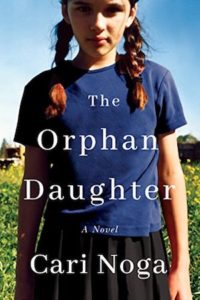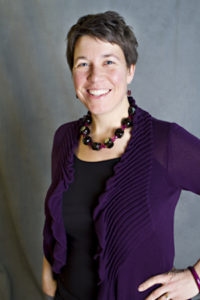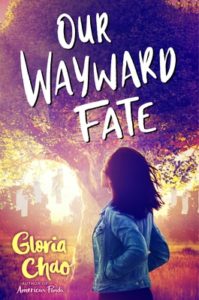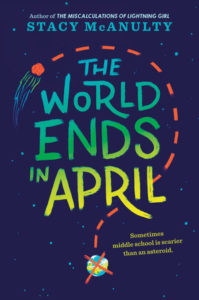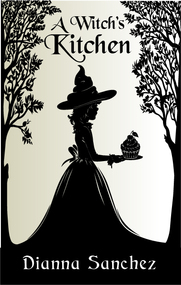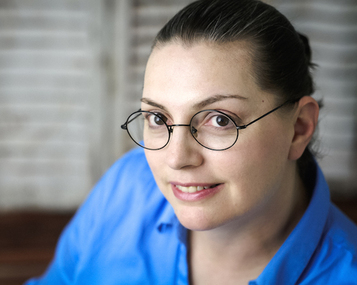ELEVENTH ANNUAL NANOWRIMO PITCHAPALOOZA
You wrote your 50,000 words (or got pretty close!). You’re a winner. You felt the high. Now what are you going to do with your precious manuscript? That’s where we, The Book Doctors, come in.
For those of you unfamiliar with Pitchapalooza, here’s the skinny: You get 250 words to pitch your book. Twenty pitches will be randomly selected from all submissions. We will then critique the pitches during a live webinar on March 13, 12PM PT, so you get to see what makes a great pitch. At the end of the webinar, we will choose one winner from the group.
The winner will receive an introduction to an agent or publisher appropriate for his/her manuscript.
Beginning February 1, 2021, you can email your pitch to nanowrimo@thebookdoctors.com. PLEASE DO NOT ATTACH YOUR PITCH, JUST EMBED IT IN THE EMAIL. Include your title and your name at the top of your pitch. All pitches must be received by 11:59PM PT on February 28, 2021.
We will also crown a Fan Favorite who will receive a free one-hour consult with us (worth $250). On March 14, 2021, the 20 random pitches will be posted on our website, www.thebookdoctors.com. Anyone can vote for a fan favorite, so get your social media engine running as soon as the pitches go up! Connecting with your future readers is a vital part of being a successfully published author, and this is a great way to get some practice. Voting closes at 11:59PM PT on March 31, 2021. Fan Favorite will be announced on April 1, 2021.
NANOWRIMO PITCHAPALOOZA SUCCESS STORIES
Gloria Chao won the 2015 NaNoWriMo Pitchapalooza with the novel that would become her critically-acclaimed debut American Panda. Her second novel, Our Wayward Fate, came out in 2019 and her third novel, Rent a Boyfriend, is out now from Simon & Schuster Books for Young Readers.
- Gloria Chao
In 2016, May Cobb ran away with NaNoWriMo Pitchapalooza. She’s been capturing attention ever since. This time it was a “heated six-publisher auction” that ended with Berkley winning the rights to publish her latest thriller The Hunting Wives, which was pitched as In a Dark, Dark Wood meets Mean Girls. Berkley plans its release for May 18, 2021.
- May Cobb
“Having my pitch selected as the 2016 winner for Pitchapalooza was such a boost! Of course it was wonderful to win, but even more than that, having the Book Doctor’s feedback on my pitch was instrumental.”
–May Cobb
Stacy McAnulty has been on fire since she won our third NaNoWriMo Pitchapalooza, publishing twenty-five books and counting. Her latest novel, Millionaires for the Month, is out now from Random House Books for Young Readers. Kirkus calls it “cinematic, over-the-top decadence, a tense race against time, and lessons on what’s truly valuable.” Stacy also signed a deal with Random House to publish another middle grade novel, A Penny Doubled, pitched as How to Steal a Dog meets Brewster’s Millions. Look for it in spring of this year. She’ll also publish three picture books in 2021: A Small Kindness (February 2), Mars! (February 9), and Brains! Not Just a Zombie Snack (August 31).
- Stacy McAnulty
Cari Noga was one of our first NaNoWriMo Pitchapalooza winners. Her winning novel, Sparrow Migrations, went on to be a semi-finalist in the 2011 Amazon Breakthrough Novel Award contest, then she received an acquisition offer from Lake Union Publishing. Her latest novel, The Orphan Daughter (Lake Union Publishing), is out now.
- Cari Noga
“Winning Pitchapalooza gave me confidence and the courage to keep fighting. It also helped bring my manuscript to the next level.”
–Gloria Chao
IMPORTANT NANOWRIMO PITCHAPALOOZA DATES
Monday, February 1, 2021–Pitch submission opens
Sunday, February 28, 2021–Final day to submit pitches
Saturday, March 13, 2021–NaNoWriMo Pitchapalooza live on YouTube
Sunday, March 14, 2021–Voting for Fan Favorite begins at www.thebookdoctors.com
Wednesday, March 31, 2021–Final day to vote for Fan Favorite
Thursday, April 1, 2021–Fan Favorite announced at www.thebookdoctors.com
10 tips for pitching your novel
Are you feeling a little unsure about exactly how to craft your pitch? We’ve got you covered.
- A great pitch is like a poem. Every word counts.
- Make us fall in love with your hero. Whether you’re writing a novel or memoir, you have to make us root for your flawed but lovable hero.
- Make us hate your villain. Show us someone unique and dastardly whom we can’t wait to hiss at.
- Just because your kids love to hear your story at bedtime doesn’t mean you’re automatically qualified to get a publishing deal. So make sure not to include this information in your pitch.
- If you have any particular expertise that relates to your novel, tell us. Establishing your credentials will help us trust you.
- Your pitch is your audition to show us what a brilliant writer you are, so it has to be the very best of your writing.
- Don’t make your pitch a book report. Make it sing and soar and amaze.
- A pitch is like a movie trailer. You start with an incredibly exciting/funny/sexy/romantic/etc. close-up with intense specificity, then you pull back to show the big picture and tell us the themes and broad strokes that build to a climax.
- Leave us with a cliffhanger. The ideal reaction to a pitch is, “Oh my God, what happens next?”
- Show us what’s unique, exciting, valuable, awesome, unexpected, about your project, and why it’s comfortable, familiar and proven.
Join our newsletter to receive more tips on how to get published.
NANOWRIMO PITCHAPALOOZA FAQS
Q: May I submit more than one pitch?
A: Yes, you may submit multiple pitches. Please include your book’s title and your name at the top of each pitch.
Q: How are the 20 pitches selected?
A: The 20 pitches are randomly selected; however, we read all the pitches.
Q: Are the choices for fan favorite also randomly selected?
A: Yes. They are the same 20 pitches that we read during the webinar.
Q: Will a recording be available?
A: Yes. You’ll be able to view the recording at our website.
Q: Where can I learn more about writing my pitch?
A: We offer resources on our YouTube channel. We recommend that you watch “The Art of the Book Pitch”, last year’s NaNoWriMo Pitchapalooza, and our Pitch Tips playlist. Hungry for more examples? Check out our Pitchapalooza playlist. You can find Gloria Chao’s pitch tips here.
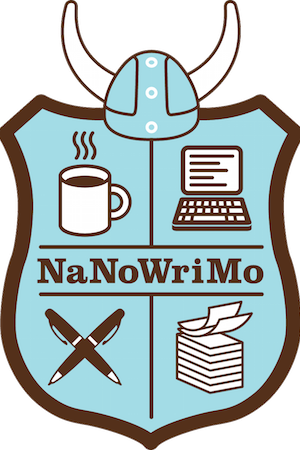
TENTH ANNUAL NANOWRIMO PITCHAPALOOZA
You wrote your 50,000 words (or got pretty close!). You’re a winner. You felt the high. Now what are you going to do with your precious manuscript? That’s where we, The Book Doctors, come in.
For those of you not familiar with Pitchapalooza, here’s the skinny: You get 250 words to pitch your book. Twenty pitches will be randomly selected from all submissions. We will then critique the pitches during a live webinar on March 14, 12PM PT, so you get to see what makes a great pitch. At the end of the webinar, we will choose one winner from the group.
The winner will receive an introduction to an agent or publisher appropriate for his/her manuscript.
Beginning February 1, 2020, you can email your pitch to nanowrimo@thebookdoctors.com. PLEASE DO NOT ATTACH YOUR PITCH, JUST EMBED IT IN THE EMAIL. Include your title and your name at the top of your pitch. All pitches must be received by 11:59PM PT on February 29, 2020.
We will also crown a fan favorite who will receive a free one-hour consult with us (worth $250). On March 15, 2020, the 20 random pitches will be posted on our website, www.thebookdoctors.com. Anyone can vote for a fan favorite, so get your social media engine running as soon as the pitches go up! Connecting with your future readers is a vital part of being a successfully published author today. And this is a great way to get some practice. Voting closes at 11:59PM PT on March 31, 2020. The fan favorite will be announced on April 1, 2020.
If you purchase a new copy of our book, The Essential Guide To Getting Your Book Published, by April 2, 2020, we’re offering an exclusive one-hour webinar where you’ll get the chance to pitch your book. Just attach a copy of your sales receipt to your email and we’ll send the link to the webinar dates.
NANOWRIMO PITCHAPALOOZA SUCCESS STORIES
It’s been a great year for past NaNoWriMo Pitchapalooza winners. Gloria Chao won the 2015 NaNoWriMo Pitchapalooza with the novel that would become her critically-acclaimed debut American Panda. Her second novel, Our Wayward Fate, came out in 2019 from Simon Pulse. Gloria also sold the rights to her next novel Rent a Boyfriend with publication planned for fall 2020. Read Gloria’s winning NaNoWriMo Pitchapalooza pitch.
- Gloria Chao
In 2016, May Cobb ran away with NaNoWriMo Pitchapalooza. She’s been capturing attention ever since. This time it was a “heated six-publisher auction” that ended with Berkley winning the rights to publish her latest thriller The Hunting Wives, which was pitched as In a Dark, Dark Wood meets Mean Girls. Berkley plans an early 2021 release. Read May’s winning pitch.
- May Cobb
“Having my pitch selected as the 2016 winner for Pitchapalooza was such a boost! Of course it was wonderful to win, but even more than that, having the Book Doctor’s feedback on my pitch was instrumental.”
–May Cobb
Stacy McAnulty has been on fire since she won our third NaNoWriMo Pitchapalooza. Her latest middle grade novel, The World Ends in April, is out now from Random House Books for Young Readers. Shelf Awareness gave it a starred review and called it “a smart, funny and emotionally candid book.” Stacy also signed a deal with Random House to publish another middle grade novel, A Penny Doubled, pitched as How to Steal a Dog meets Brewster’s Millions. Look for it in spring 2021. Read Stacy’s winning pitch.
- Stacy McAnulty
Cari Noga was one of our first NaNoWriMo Pitchapalooza winners. Her winning novel, Sparrow Migrations, went on to be a semi-finalist in the 2011 Amazon Breakthrough Novel Award contest, then she received an acquisition offer from Lake Union Publishing. Her latest novel, The Orphan Daughter (Lake Union Publishing), released last year. Read Cari’s winning pitch.
- Cari Noga
“Winning Pitchapalooza gave me confidence and the courage to keep fighting. It also helped bring my manuscript to the next level.”
–Gloria Chao
Are you feeling a little unsure about exactly how to craft your pitch? We’ve got you covered.
10 tips for pitching your novel
- A great pitch is like a poem. Every word counts.
- Make us fall in love with your hero. Whether you’re writing a novel or memoir, you have to make us root for your flawed but lovable hero.
- Make us hate your villain. Show us someone unique and dastardly whom we can’t wait to hiss at.
- Just because your kids love to hear your story at bedtime doesn’t mean you’re automatically qualified to get a publishing deal. So make sure not to include this information in your pitch.
- If you have any particular expertise that relates to your novel, tell us. Establishing your credentials will help us trust you.
- Your pitch is your audition to show us what a brilliant writer you are, so it has to be the very best of your writing.
- Don’t make your pitch a book report. Make it sing and soar and amaze.
- A pitch is like a movie trailer. You start with an incredibly exciting/funny/sexy/romantic/etc. close-up with intense specificity, then you pull back to show the big picture and tell us the themes and broad strokes that build to a climax.
- Leave us with a cliffhanger. The ideal reaction to a pitch is, “Oh my God, what happens next?”
- Show us what’s unique, exciting, valuable, awesome, unexpected, about your project, and why it’s comfortable, familiar and proven.
Join our newsletter to receive more tips on how to get published.
NANOWRIMO PITCHAPALOOZA FAQS
Q: May I submit more than one pitch?
A: Yes, you may submit multiple pitches. Please include your book’s title and your name at the top of each pitch.
Q: How are the 20 pitches selected?
A: The 20 pitches are randomly selected; however, we read all the pitches.
Q: Are the choices for fan favorite also randomly selected?
A: Yes. They are the same 20 pitches that we read during the webinar.
Q: If I buy a copy of The Essential Guide to Getting Your Book Published, how does the one-hour webinar work?
A: We limit each webinar to 20 people, which gives everyone the chance to pitch and get feedback. To be eligible, purchase of a new copy of The Essential Guide is required.
Q: Where can I learn more about writing my pitch?
A: We offer resources on our YouTube channel. We recommend that you watch “The Art of the Book Pitch”, last year’s NaNoWriMo Pitchapalooza, and our Pitch Tips playlist. Hungry for more examples? Check out our Pitchapalooza playlist.
IMPORTANT NANOWRIMO PITCHAPALOOZA DATES
Saturday, February 1, 2020–Pitch submission opens
Saturday, February 29, 2020–Final day to submit pitches
Saturday, March 14, 2020–NaNoWriMo Pitchapalooza live on YouTube
Sunday, March 15, 2020–Voting for fan favorite begins
Tuesday, March 31, 2020–Final day to vote for fan favorite
Wednesday, April 1, 2020–Fan favorite announced

Ninth Annual NaNoWriMo Pitchapalooza
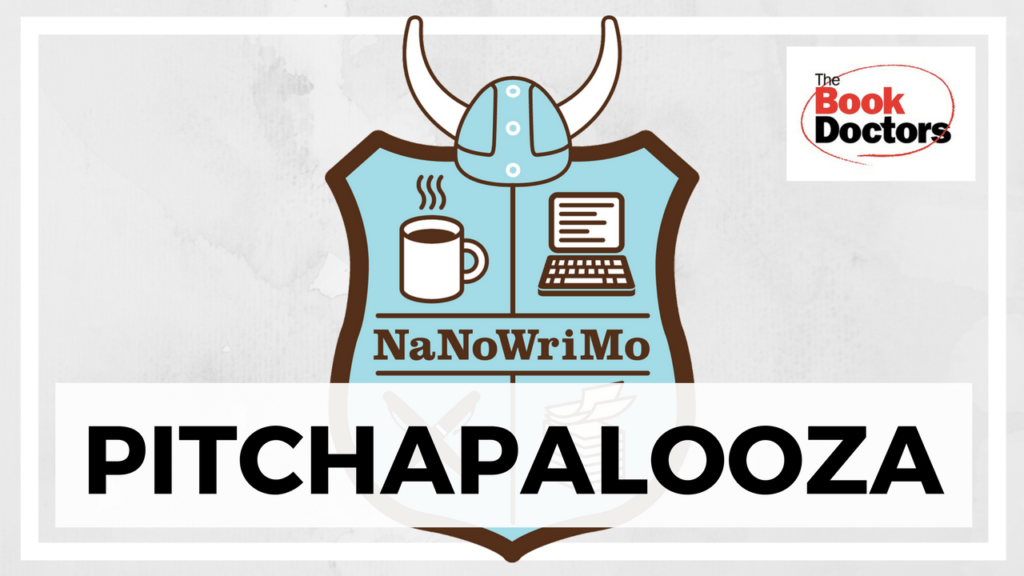
You wrote your 50,000 words (or got pretty close!). You’re a winner. You felt the high. Now what are you going to do with your precious manuscript? That’s where we, The Book Doctors, come in.
For those of you not familiar with Pitchapalooza, here’s the skinny: You get 250 words to pitch your book. Twenty pitches will be randomly selected from all submissions. We will then critique the pitches during a live webinar on March 16, 2019 at 12PM PT / 3PM ET, so you get to see what makes a great pitch. At the end of the webinar, we will choose one winner from the group.
The winner will receive an introduction to an agent or publisher appropriate for his/her manuscript.
Beginning February 1, 2019, you can email your pitch to nanowrimo@thebookdoctors.com. PLEASE DO NOT ATTACH YOUR PITCH, JUST EMBED IT IN THE EMAIL. Include your title and your name at the top of your pitch. All pitches must be received by 11:59PM PST on February 28, 2019.
We will also crown a fan favorite who will receive a free one-hour consult with us (worth $250). On March 17, 2019, the 20 random pitches will be posted on our website, www.thebookdoctors.com. Anyone can vote for a fan favorite, so get your social media engine running as soon as the pitches go up! Connecting with your future readers is a vital part of being a successfully published author today. And this is a great way to get some practice. Voting closes at 11:59PM PST on April 1, 2019. The fan favorite will be announced on April 2, 2019.
If you purchase a copy of our book, The Essential Guide To Getting Your Book Published, by April 2, 2019, we’re offering an exclusive one-hour webinar where you’ll get the chance to pitch your book. Just attach a copy of your sales receipt to your email and we’ll send the link to the webinar dates.
Important NaNoWriMo Pitchapalooza dates
Friday, February 1, 2019–Pitch submission opens
Thursday, February 28, 2019–Final day to submit pitches
Saturday, March 16, 2019–NaNoWriMo Pitchapalooza live on YouTube
Sunday, March 17, 2019–Voting for fan favorite begins
Monday, April 1, 2019–Final day to vote for fan favorite
Tuesday, April 2, 2019–Fan favorite announced
NaNoWriMo Pitchapalooza success stories
It’s been a great year for past NaNoWriMo Pitchapalooza winners. Gloria Chao’s novel American Panda (Simon Pulse/Simon & Schuster) released to multiple starred reviews. Read Gloria’s winning NaNoWriMo Pitchapalooza pitch.
- Gloria Chao
Cari Noga’s novel The Orphan Daughter (Lake Union Publishing) published in May. Read Cari’s winning pitch.
- Cari Noga
May Cobb’s novel Big Woods (Midnight Ink) came out in July. Read May’s winning pitch.
- May Cobb
Stacy McAnulty is now the award-winning author of 19 books for young readers. She launched her middle grade novel The Miscalculations of Lightning Girl with multiple starred reviews and a spot on the Indie Next List. Read Stacy’s winning pitch.
- Stacy McAnulty
“Winning Pitchapalooza gave me confidence and the courage to keep fighting. It also helped bring my manuscript to the next level.”
–Gloria Chao
Are you feeling a little unsure about exactly how to craft your pitch?
10 tips for pitching your novel
- A great pitch is like a poem. Every word counts.
- Make us fall in love with your hero. Whether you’re writing a novel or memoir, you have to make us root for your flawed but lovable hero.
- Make us hate your villain. Show us someone unique and dastardly whom we can’t wait to hiss at.
- Just because your kids love to hear your story at bedtime doesn’t mean you’re automatically qualified to get a publishing deal. So make sure not to include this information in your pitch.
- If you have any particular expertise that relates to your novel, tell us. Establishing your credentials will help us trust you.
- Your pitch is your audition to show us what a brilliant writer you are, so it has to be the very best of your writing.
- Don’t make your pitch a book report. Make it sing and soar and amaze.
- A pitch is like a movie trailer. You start with an incredibly exciting/funny/sexy/romantic/etc. close-up with intense specificity, then you pull back to show the big picture and tell us the themes and broad strokes that build to a climax.
- Leave us with a cliffhanger. The ideal reaction to a pitch is, “Oh my God, what happens next?”
- Show us what’s unique, exciting, valuable, awesome, unexpected, about your project, and why it’s comfortable, familiar and proven.
NaNoWriMo Pitchapalooza FAQs
Q: May I submit more than one pitch?
A: Yes, you may submit multiple pitches. Please include your book’s title and your name at the top of each pitch.
Q: How long is a pitch?
A: You get 250 words to pitch your book.
Q: How are the 20 pitches selected?
A: The 20 pitches are randomly selected; however, we read all the pitches.
Q: Are the choices for fan favorite also randomly selected?
A: Yes. They are the same 20 pitches that we read during the webinar.
Q: If I buy a copy of The Essential Guide to Getting Your Book Published, how does the one-hour webinar work?
A: We limit each webinar to 20 people, which gives everyone the chance to pitch and get feedback.
Q: Where can I learn more about writing my pitch?
A: We offer resources on our YouTube channel. We recommend that you watch “The Art of the Book Pitch”, last year’s NaNoWriMo Pitchapalooza, and our Pitch Tips playlist. Hungry for more examples? Check out our Pitchapalooza playlist.

Eighth Annual NaNoWriMo Pitchapalooza

You wrote your 50,000 words (or got pretty close!). You’re a winner. You felt the high. Now what are you going to do with your precious manuscript? That’s where we, The Book Doctors, come in.
For those of you not familiar with Pitchapalooza, here’s the skinny: You get 250 words to pitch your book. Twenty pitches will be randomly selected from all submissions. We will then critique the pitches during a live webinar on March 15, 2018 at 5PM PST, so you get to see what makes a great pitch. At the end of the webinar, we will choose one winner from the group.
The winner will receive an introduction to an agent or publisher appropriate for his/her manuscript.
Beginning February 1, 2018, you can email your pitch to nanowrimo@thebookdoctors.com. PLEASE DO NOT ATTACH YOUR PITCH, JUST EMBED IT IN THE EMAIL. Include your title and your name at the top of your pitch. All pitches must be received by 11:59PM PST on February 28, 2018.
We will also crown a fan favorite who will receive a free one-hour consult with us (worth $250). On March 16, 2018, the 20 random pitches will be posted on our website, www.thebookdoctors.com. Anyone can vote for a fan favorite, so get your social media engine running as soon as the pitches go up! Connecting with your future readers is a vital part of being a successfully published author today. And this is a great way to get some practice. Voting closes at 11:59PM PST on April 1, 2018. The fan favorite will be announced on April 2, 2018.
If you purchase a copy of our book, The Essential Guide To Getting Your Book Published, by April 2, 2018, we’re offering an exclusive one-hour webinar where you’ll get the chance to pitch your book. Just attach a copy of your sales receipt to your email and we’ll send the link to the webinar dates.
Important NaNoWriMo Pitchapalooza dates
February 1, 2018–Pitch submission opens
February 28, 2018–Final day to submit pitches
March 15, 2018–NaNoWriMo Pitchapalooza live on YouTube
March 16, 2018–Voting for fan favorite begins
April 1, 2018–Final day to vote for fan favorite
April 2, 2018–Fan favorite announced
NaNoWriMo Pitchapalooza success stories
It’s been a great year for past NaNoWriMo Pitchapalooza winners. Gloria Chao’s novel, American Panda (Simon Pulse/Simon & Schuster) will be published in February. Read Gloria’s winning NaNoWriMo Pitchapalooza pitch.
- Gloria Chao
Cari Noga’s novel, The Orphan Daughter (Lake Union Publishing) will be published in May. Read Cari’s winning pitch.
- Cari Noga
And May Cobb’s novel, Big Woods (Midnight Ink) will be published in July. Read May’s winning pitch.
- May Cobb
“Winning Pitchapalooza gave me confidence and the courage to keep fighting. It also helped bring my manuscript to the next level.”
–Gloria Chao
Are you feeling a little unsure about exactly how to craft your pitch?
10 tips for pitching your novel
- A great pitch is like a poem. Every word counts.
- Make us fall in love with your hero. Whether you’re writing a novel or memoir, you have to make us root for your flawed but lovable hero.
- Make us hate your villain. Show us someone unique and dastardly whom we can’t wait to hiss at.
- Just because your kids love to hear your story at bedtime doesn’t mean you’re automatically qualified to get a publishing deal. So make sure not to include this information in your pitch.
- If you have any particular expertise that relates to your novel, tell us. Establishing your credentials will help us trust you.
- Your pitch is your audition to show us what a brilliant writer you are, so it has to be the very best of your writing.
- Don’t make your pitch a book report. Make it sing and soar and amaze.
- A pitch is like a movie trailer. You start with an incredibly exciting/funny/sexy/romantic/etc. close-up with intense specificity, then you pull back to show the big picture and tell us the themes and broad strokes that build to a climax.
- Leave us with a cliffhanger. The ideal reaction to a pitch is, “Oh my God, what happens next?”
- Show us what’s unique, exciting, valuable, awesome, unexpected, about your project, and why it’s comfortable, familiar and proven.
NaNoWriMo Pitchapalooza FAQs
Q: May I submit more than one pitch?
A: Yes, you may submit multiple pitches. Please include your book’s title and your name at the top of each pitch.
Q: How are the 20 pitches selected?
A: The 20 pitches are randomly selected; however, we read all the pitches.
Q: Are the choices for fan favorite also randomly selected?
A: Yes. They are the same 20 pitches that we read during the webinar.
Q: If I buy a copy of The Essential Guide to Getting Your Book Published, how does the one-hour webinar work?
A: We limit each webinar to 20 people, which gives everyone the chance to pitch and get feedback.
Q: Where can I learn more about writing my pitch?
A: We offer resources on our YouTube channel. We recommend that you watch “The Art of the Book Pitch” and last year’s NaNoWriMo Pitchapalooza. Hungry for more examples? Check out our Pitchapalooza playlist.
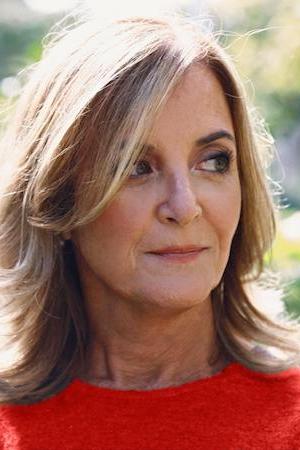
Patricia Perry Donovan on Hurricane Sandy, NaNoWriMo, and the Dreaded Sophomore Jinx
We first met Patricia Perry Donovan several years ago when she won our Pitchapalooza event (think American Idol for books, only much gentler and much kinder) down at the Jersey Shore. She had a great success with her first book, and At Wave’s End, her second novel, dropped this week. So we thought we’d pick her brain about books, writing, and how—when it comes to novels—it’s different the second time around.
Read this interview on the HuffPost.
The Book Doctors: Many congratulations on the publication of your second book. Tell us about At Wave’s End.
Patricia Perry Donovan: I’m delighted to. Inspired by Hurricane Sandy, At Wave’s End is the story of Connie Sterling, an impulsive woman who wins a ramshackle bed and breakfast at the Jersey Shore. When a deadly hurricane hits, Connie finds herself in over her head, requiring her adult daughter Faith, a Manhattan chef, to bail her out. Once Faith comes to Connie’s rescue, the storm’s aftermath dredges up deceptions and emotional debris that threaten to destroy the inn’s future and their fragile mother-daughter bond.
TBD: Do you do research for your books? Were there any other books that influenced your writing of this book? Do you outline before you start writing?
PPD: I’m also a journalist, so research is second nature. However, in this case, having lived through a coastal superstorm, I could mostly write from experience. I did research Hurricane Sandy’s actual timeline to lend authenticity to the book’s fictional Hurricane Nadine.
Influence-wise, At Wave’s End began as a series of short stories I penned in the storm’s aftermath. I had hoped to entwine these stories in a novel, a la Elizabeth Strout’s faultless Olive Kitteridge. That didn’t exactly happen, but I still wrangled a fairly large cast of characters in this book. I’d still like to one day write a novel comprised of linked stories.
And on the question of ‘pants-ing’ versus ‘planning,’ I’m a card-carrying ‘seat of the pants’ writer. However, I surrendered that luxury in order to meet my publisher’s deadline.
TBD: Were you worried about the dreaded sophomore jinx? Did this affect you in any way?
PPD: Gee, I didn’t really think about a ‘jinx’ until you mentioned it! But yes, it’s terribly daunting to write a second book during the launch and review of your first. On the one hand, my writing felt stronger the second time out. On the other hand, I needed to make a concerted effort to close myself off from all Deliver Her feedback (both glowing and gut-wrenching) in order to complete book two.
TBD: What did you learn from writing your first book that you could apply to your second?
PPD: SO much. First, in terms of process, I tapped into the trove of guidance from my gifted team of Deliver Her editors. I could hear these ‘book whisperers’ in my head as I wrote At Wave’s End.
Second, I discovered a delightful community of readers, who love to interact and share snippets of their lives, and immersed myself in the world of book reviews. My skin is thicker as a result! Here, I must acknowledge my amazing tribe of fellow Lake Union authors, who welcomed a newcomer with open arms. As a group, we shake off (and laugh off) the more distasteful aspects of publishing and savor the favorable ones.
The entire experience reinforced my desire to write the kind of stories I enjoy reading: family dramas with a dollop of dysfunction, but also a glimmer of optimism.
TBD: What did you learn from your first book that you could apply to your second in terms of promotion and marketing?
PPD: I’ve improved my advance game this time around, investing many more pre-release hours attempting to put At Wave’s End in influencers’ hands. As a debut novelist, I didn’t grasp the importance of this.
Also, I’m trying to rein in my time on social media, which, if I’m not careful, quickly consumes my writing window. I can’t avoid it right now during At Wave’s End’s launch. The other day, my first waking thought was the edit of a tweet I’d sent the night before. If that’s not a warning I need to cut back, I don’t know what is!
My goal is to create a balance. While I’m thrilled with my success as a novelist, I miss those early days of writing in the dark only for myself.
TBD: Do you have an agent representing you on these books? What was your experience working with your publisher like?
PPD: I am represented by the fabulous Elisabeth Weed of The Book Group. And working with my Lake Union Publishing team is heavenly. They are responsive, supportive and attuned to writers’ needs.
TBD: Congratulations on the Writers Digest award. How did that come about?
PPD: Thank you! My short story “Still Life” won an Honorable Mention in the 84th Annual Writer’s Digest Writing Competition in 2015. That story resurrected Mia, a darling from Deliver Her, and also won an Honorable Mention that year in the Lorian Hemingway Short Story Competition. Who knows? We may see Mia in longer form one day.
TBD: Journalism tends to be short-form writing. How did you learn to tell a story that keeps going for 300 or so pages?
PPD: My fiction generally starts out in short form as a short story. Then, the best stories beg to keep going; in fact, they pretty much tell themselves. My job is just to keep up and capture them on the page.
I suppose I ‘learned’ to tell longer stories by participating in NaNoWrMo’s online novel writing competition. I would encourage anyone who thinks they can’t write a book to try it. There are no prizes, other than attaining a personal goal of writing 50,000 words in a single month. NaNoWriMo is a lot of fun, and taught me that with daily discipline, I could complete a book—a very rough one, but a book nonetheless.
TBD: Why would you write a book inspired by a natural disaster that impacted your own community, as well as thousands of others?
PPD: I read once that every novel is a love letter to someone. In this case, perhaps At Wave’s End is a love letter to my community. While Sandy spared my home, hundreds of thousands of storm survivors, including many friends and neighbors, weren’t as fortunate.
I actually organized this book into six parts, each named for a stage in a community Disaster Recovery model. I learned about the model in post-Sandy volunteer training. It’s similar to the stages of grief experienced after a death. The Reconstruction phase continues today, which is why I included this Afterword in my book:
This story is a work of fiction. However, in 2012, a storm of similar magnitude devastated the East Coast, killing thirty-seven people and destroying close to 350,000 homes. Although Hurricane Sandy forever altered the topography of countless neighborhoods, the destruction also triggered an extraordinary surge of community and compassion. With reconstruction ongoing at the superstorm’s five-year mark, this story is intended to honor Sandy’s survivors for their resilience and determination to rise above disaster.
TBD: We hate to ask you this, but now that you have two books under your belt, what advice do you have for writers?
PPD: Going back to my earlier comment about zealously guarding my writing time, I would advise aspiring writers to avoid becoming so consumed by the business of writing that you forget to get down to the business of writing.
Patricia Perry Donovan is an American journalist who writes about healthcare. Her fiction has appeared at Gravel Literary, Flash Fiction Magazine, Bethlehem Writers Roundtable and in other literary journals. The mother of two grown daughters, she lives at the Jersey shore with her husband, with whom she has fond memories of raising their young family abroad in France. Connect with her on Facebook @PatriciaPerryDonovanBooks and on Twitter @PatPDonovan. Learn more at www.patriciaperrydonovan.com.
JOIN OUR NEWSLETTER TO RECEIVE MORE INTERVIEWS AND TIPS ON HOW TO GET PUBLISHED.
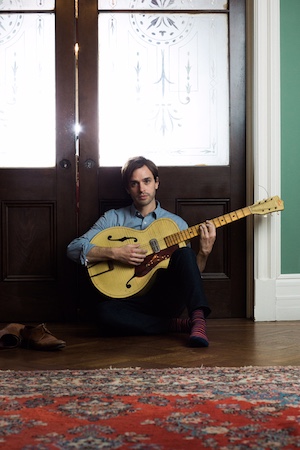
Val Emmich on Sucking and the Short, Torturous Ten-Year Process of Getting Published
We met Val Emmich when he won our Jersey City Pitchapalooza at Word Bookstore. He was so comfortable presenting, he paused in all the right places, and he put the right emphasis on all the right words. And he had a fantastic story. We found out he’s also a very accomplished actor and musician, which explained his ability to present himself. One of the greatest things about being a book doctor is when one of your patients gets a fab book deal with a fantastic publisher. Val did exactly that. So we thought we’d pick his brain about exactly how he managed to add Author to his impressive resume.
The Book Doctors: What were some of your favorite books as a kid, and why? What are you reading currently?
Val Emmich: I have pretty poor recall of my childhood years, which may be surprising coming from someone who just wrote a whole novel about a child with a near-perfect memory. That said, I do remember ripping through as many Hardy Boys books as I could. I also have a vivid recollection of listening to one of my teachers read aloud to our class Charlotte’s Web. I was riveted by it, probably because it’s about animals and I love animals, more than I love people. Right now, I’m reading Hillbilly Elegy by J.D. Vance, a recommendation from my father, and The Nix by Nathan Hill.
TBD: David was also an actor who became a writer of books. How do you think this helped you as you craft a first novel?
VE: Acting is about putting yourself in someone else’s shoes. Embodying a character that isn’t you. It requires empathy and observational skills. You keep searching for how to get to the heart of the person you’re trying to portray. You’re looking for a detail that speaks to you. How someone walks. How he got that scar on his chin. How he styles his hair. This is all very similar to the character work necessary for writing a novel. Additionally, the process of reading and breaking down scripts was really instructive, both in terms of understanding the motivation and objective of a given scene and also how stories are structured and paced.
TBD: Tell us about The Reminders.
VE: Joan is ten and she’s got this rare condition where she can recall nearly every day of her life in exact detail. Then there’s Gavin, an actor in his thirties, who’s just lost his partner and soulmate, Sydney. Gavin attempts to rid his life of all reminders of Sydney, hoping it’ll soothe some of his overwhelming pain. But then he learns that Joan possesses detailed memories of Sydney, stories about him that Gavin has never heard, and Gavin has no choice but to dive back into the past. Meanwhile, Joan wants something back from Gavin. She’s the girl who can’t forget, but she’d rather be the girl who can’t be forgotten and she believes that Gavin, a semi-celebrity, might be able to help her achieve that dream.
The idea for the novel first came to me when my daughter fell out of a shopping cart in Home Depot and landed on her head on the concrete floor. Around the same time I saw a piece on 60 Minutes that featured people with this real-life memory condition known as highly superior autobiographical memory (HSAM) and I had this absurd thought: What if my daughter’s bonk on the head resulted in her somehow acquiring this specialized memory? That ridiculous hypothesis, the playfulness of it, set the tone for the whole novel.
TBD: Please describe your path to publication.
VE: The quick version. I wrote one novel. It sucked. I wrote a second novel. It sucked less. I wrote a third novel. It was decent enough to get me an agent. We tore the novel apart, and I built it back up again essentially from scratch. Then my agent sold the book and my editors tore it up and I put it back together yet again. By the time the novel was published, in May of this year, it had been ten years of dedicated writing, along with tons of reading (other novels, how-to books), attending writers conferences and picking the brains of the few writers I had access to who had written books.
TBD: Was it difficult writing in two voices?
VE: Very. The most difficult parts were making sure the voices were both distinct and compelling. The consensus among my earliest readers seemed to be that Joan was the star of the book. I knew I’d never be able to have Gavin outshine her. That’s not his role. Still, I wanted to make sure his sections didn’t feel like a letdown after hers.
I’d listen to different music when writing in each voice. I found songs that seemed to tap into the energy of each character. After listening to the songs over and over, the music began to trigger an almost Pavlovian response in me where I’d immediately enter the head of that specific character. Also, I focused in a boringly technical way on the language used by my two protagonists. I created a detailed spreadsheet that counted the frequency of each word in each section. It showed me a lot about what I was organically doing with each character, and at that point, it was a matter of removing what made the two voices similar and emphasizing what made them different. Eventually, this overt hypersensitivity to vocabulary became second nature and I was able to write fluidly, making Joan and Gavin their own distinct people on the page.
TBD: We notice that you are doing house concerts to promote your book. What exactly are they, and how did you come up with the idea?
VE: It just made sense. The book is partially about music. I’m a musician, songwriter, and performer. I record and release albums. I have music fans. I hoped my music fans would also be interested in reading my book. On top of all that, I’ve been to enough poorly attended author events at bookstores, and even when they’re well attended, they can be boring when it’s just straight-up reading. I wanted to do a hybrid event, some reading, a bit of discussion, plenty of music. I didn’t feel like a bookstore or traditional music venue was going to offer the intimate, casual vibe I had in mind as well as the guarantee of a crowd. I wanted a place where people could relax and stay a while and where I could really forge a personal connection. I reached out to some of my fans and asked if they’d be interested in hosting shows in their homes and inviting all their friends. They said yes.
TBD: How does being a musician and songwriter affect your prose writing?
VE: Prose writing requires an ear, just like songwriting. You need to have a sense of rhythm. Also, with a song (at least with my songs) there’s usually a refrain or leitmotif that emphasizes an important theme or emotion. I try to do the same thing in my writing, sprinkle in timely repetitions to drive home something that I deem significant. But I think the biggest thing I’ve learned from my life in music has to with my understanding of the audience. Over two decades of performing in front of a crowd and engaging online with listener feedback, I’ve learned a lot about how to make people feel something. The goal is the same when writing prose: to trigger a reaction in the reader.
TBD: What are you working on next?
VE: I’ve started writing a new novel. Before I get too deep into it, I plan to record and release new music. Songwriting is more tactile and physical than prose writing. It also takes far less time. I need a more immediate artistic fix right now.
TBD: We hate to ask you this, but what advice do you have for writers?
VE: Treat it like a real job and remember that even a so-called real job involves plenty of goofing off. Carve out time to write, whatever works for you, thirty minutes, four hours, however long and sit there, even if you’re not actually typing words or producing pages, just sit there. Even when you’re staring at a white page, mind wandering elsewhere, that’s okay. That’s work. Sitting there with that dumb look on your face is part of the job. Do it again the next day. And the next. If you miss a day, no worries. Miss two days? Doesn’t matter. Put yourself in that chair as many times as you can over as long a stretch as you can. If you keep showing up in that chair, over time, enough time, you might have something. Might not, but there’s no other way to do it. If you want it, that’s what’s required: hours. There’s less magic involved than the would-be writer might imagine. At the end of the day, it’s simple math. It’s a whole bunch of hours added up. Start spending them.
Dubbed a “Renaissance Man” by the New York Post, Val Emmich is a writer, singer-songwriter, and actor. He has had recurring roles on Vinyl and Ugly Betty as well as a memorable guest role as Liz Lemon’s coffee-boy fling, Jamie, on 30 Rock. Emmich lives in Jersey City, New Jersey, with his wife and their two children. The Reminders is his first novel.
JOIN OUR NEWSLETTER TO RECEIVE MORE INTERVIEWS AND TIPS ON HOW TO GET PUBLISHED.

Jenise Aminoff on Kickstarter, Writing, and Getting Her Novel Published
We first met Jenise Aminoff at the New England SCBWI Conference in Springfield, Massachusetts. She wowed us with her awesome pitch at our Pitchapalooza (think American Idol for books), and we were absolutely sure that she was going to be a published author sooner rather than later. Sure enough, her new book, A Witch’s Kitchen, is coming out, and we thought we would pick her brain about her road to publication.
Read the interview on the Huffington Post.
The Book Doctors: How did you learn to be a writer?
Jenise Aminoff: Yikes. There are so many ways I could answer that question. The simple answer is that I took a lot of classes. When I got to MIT, thinking I’d be a physicist or aero/astro engineer, I started taking writing classes as stress relief. Contrary to popular belief, MIT actually has a robust humanities department and an excellent writing program. At some point, I realized that I was enjoying writing much more than solving equations, so I changed majors. I have a bachelor’s of science in writing, and my thesis was poetry. Go figure.
One of the classes I took was Joe Haldeman’s Science Fiction Writing. He told us about the Clarion Workshop, so the fall after I graduated (and got married), I applied and got in. Clarion ’95 was an incredible experience, and a lot of fantastic writers came out of it. Josh Peterson attended having just won the Writers of the Future contest. Kelly Link (a recent Pulitzer finalist) sold her first story to Asimov‘s during Clarion. Nalo Hopkinson (won a Campbell and a Nebula and many, many more), Lucy Snyder (just won a Stoker), and Michael Warren Lucas have all gone on to be successful novelists. Bruce Glassco wrote the incredibly popular board game Betrayal at House on the Hill.
Going from that to the MFA program at Emerson College was a huge letdown, and I quit after one semester. But I needed a job, so a friend took pity on me and got me a job as a technical writer. Funny thing: if you tell people you have a degree in writing from MIT, they immediately assume it’s technical or scientific writing. Since then, I’ve been a technical writer, science writer, information designer, webmaster, grants writer, marketing content writer, and STEM curriculum designer.
For a long time, my fiction and poetry took a backseat to career and kids, but then a novel fell on my head. And I realized I was in trouble because I’d never studied long-form fiction, and novels are NOT just longer versions of short stories. So I found more classes to take: Odyssey Online’s Fabulous Dialogue in Fantastic Fiction with Jeanne Cavelos, Writing Middle Grade/YA Novels with Holly Thompson, and Odyssey Online’s Getting the Big Picture (novel revision) with Barbara Ashford.
All throughout this, I was keeping active in one way or another. I belonged to critique groups, live and online. I was a slush reader for Aboriginal Science Fiction magazine right after Clarion, and after the first Odyssey Online class, I became an editor for New Myths magazine. I ran a reading series with an open mic for nearly ten years. And I read and read and read, everything I could get my hands on about writing: Le Guin’s Steering the Craft; Lawrence Block’s Spider, Spin Me a Web; Don Maass’s Writing the Breakout Novel; Cathy Yardley’s Rock Your Plot; and of course, The Essential Guide to Getting Your Book Published. I also joined the Society for Children’s Book Writers and Illustrators (SCBWI) and read their annual guide and quarterly newsletters and online articles.
TBD: What were some of your favorite books as a kid, and why?
JA: Yikes squared. How long can this article be? I’m a VORACIOUS reader.
When I was still in the children’s room of the Ernie Pyle branch of the Albuquerque Public Library, I read Walter Farley (The Black Stallion), Marguerite Henry (Misty of Chincoteague), Frances Hodgson Burnett (The Secret Garden, The Little Princess). At my school library, I read all the Happy Hollisters and the Oz novels, Louisa May Alcott and Laura Ingalls Wilder. Then one day, when I was nine, I stumbled across a new book, Anne McCaffrey’s Dragonflight. Yes, I know that’s not a juvenile. Someone had misshelved it, I suppose. But I checked it out, read it with avid interest, brought it back, and asked if there were more.
The children’s librarian looked at me. “You read this? Did you understand it?” When I nodded, she called my mother over, spoke to her briefly, then turned back to me and said, “Come with me.” She led me into the adult section of the library and placed in my hands a small paperback: J.R.R Tolkien’s The Fellowship of the Ring.
I owe that librarian so much, and I never even knew her name. After that, I had the run of the adult section. My mother was a mystery reader, but she also liked Ray Bradbury and introduced me to him. I started reading the entire SF section starting with the A’s: Anthony, Asimov, Beagle, Bradley, Cherryh, Clarke, Donaldson, Doyle… Eventually, I looped back to juveniles and found Lloyd Alexander and Madeline L’Engle. Of these, the ones I read over and over and over were Peter Beagle’s The Last Unicorn, Tolkien’s Lord of the Rings, all the McCaffreys, L’Engle’s A Wrinkle in Time, and, in my teen years, Windhaven by George R.R. Martin and Lisa Tuttle.
TBD: What are you reading these days?
JA: Still reading children’s literature, everything my girls bring into the house, plus a lot of stuff they don’t find interesting but I do. I’m currently investigating verse novels as an interesting form I’d never known about. Also adult SF, particularly Seanan McGuire, Cat Valente, N.K. Jemison, Daniel Jose Older, John Scalzi, and China Mieville. My husband is a history buff, and he hands me the well written stuff. I’m currently reading Sailing the Wine Dark Sea by Thomas Cahill. I’m also reading some basic psychology, articles on Maslow’s Hierarchy of Human Needs as a framework for structuring character development. I’m working my way through Second Sight by Cheryl B. Klein. I follow several web comics religiously: xkcd, Girl Genius, Questionable Content, Mare Internum, Blindsprings, Kiwiblitz, and Phoebe and Her Unicorn.
TBD: How did you come up with the idea for your book?
JA: It fell on my head. Really. In my family, we make each other Christmas presents. Right after Thanksgiving 2013, my younger daughter asked me to write her a story with fairies and unicorns as her present. I thought, okay, sure, 10 pages or so. A couple of days later, I was watching my older daughter baking a cake. She doesn’t use recipes (that’s cheating), and sometimes her cakes are fabulous and sometimes they’re awful, but most of the time they’re okay. I thought, What if there were a young witch who just can’t figure out magic but is really good at cooking? And I started writing. And writing. And the story wouldn’t end. By Christmas, I had something like 50 pages written, and I knew then that it was a novel. I finished the first draft in time for her birthday in March, and it was around 50k words by then.
In A Witch’s Kitchen, Millie’s an apprentice witch who can’t cast a successful spell but who can cook amazing meals and scrumptious desserts. Her mother’s only interested in the magic, though, so Millie feels unappreciated and worthless. Millie’s grandmother comes up with the clever idea of sending her to the Enchanted Forest School, where she studies magic and many other things with fairies and dragons and goblins, reconnects with her half-brother, a wizard, befriends a pixie and an elf, and starts discovering that her cooking has value, and her magic isn’t so messed up as it seems. Ultimately, the novel’s about not letting other people define you.
TBD: What were some of the joys and perils of writing your novel?
JA: Joys and perils is a good way to describe it. On the one hand, it was glorious. Words just kept pouring out of me in this seemingly unending stream, and the big challenge was finding time in which to write. Fortunately, my employer decided to move to a new location which would have meant a 90-minute commute for me, so I gleefully quit and focused on the novel. But I really had no idea what I was doing. It felt like navigating a maze in total darkness using only my elbows. Characters would suddenly appear out of nowhere and take over the plot, and I’d later have to ruthlessly revise them out. And because this was my first novel, every niggling little idea I’d ever had, and every moral I wanted to pass on to my girls, showed up in one form or another. And I then had to prune and prune and prune. I have determined, empirically, that I am not a pantser. All those years as a technical writer, I suppose.
TBD: How did you go about selling your book?
JA: First, I joined SCBWI and looked through their annual guide, The Book, and their lists of agents and their sample query letter. I usually attend Arisia, the largest SF convention in Boston, and it so happened that in January 2015, N.K. Jemison was doing a pitch session, so I signed up for that. I really had no idea what a pitch was, so I read her the first paragraph of my query letter, and she had some good advice for fixing that up. Her assistant gave me some comp suggestions.
Then I went to the New England SCBWI Conference in Springfield in April 2015, and I learned so much, my head nearly exploded. On the first day, I went to a query critique session with agent Kaylee Davis, and she had some very helpful advice. I was attending with my friend Dirk Tiede, who was also a first-time attendee, and he insisted I had to do the Pitchapalooza. I really didn’t want to; pitching in front of a huge crowd of people I didn’t know sounded absolutely terrifying, but Dirk was pitching, so I put my name in to be supportive. When you pulled my name out of that bucket, I was sitting on the floor in the back of the room, frantically revising that pitch using Davis’s advice. The sheet of paper I brought up was scribbled over and scratched out and rewritten. But I pitched it, and I won. I’m still stunned by this. I’d never even seen a Pitchapalooza before.
This gave me a lot of confidence. Taking what I learned at the conference, I revised the novel again, and I started querying in June, without a whole lot of success. My manuscript buddy Dana told me about Twitter pitch parties, and I tried a few of those and got a few lukewarm responses. And then my friend Elizabeth told me about the Young Explorers’ Adventure Guide, an annual anthology of science fiction written for children, mostly middle grade but also a little YA. I checked out the publisher, Dreaming Robot Press, and I noticed that they were accepting submissions for MG fantasy novels. So I sent them my query. They got back to me in early August expressing interest, and I called in my Pitchapalooza prize, a consultation with you. Thank you so much for holding my hand through that process.
Despite your and my best efforts, I never landed an agent, but I got a lot of good advice from Gay Haldeman and Jeanne Cavelos and Barbara Ashford, and I signed with Dreaming Robot Press in February 2016.
TBD: What was it like to do a Kickstarter campaign? What are some do’s and don’ts that you learned?
JA: The Kickstarter campaign was wild and terrifying and huge fun, all at the same time. I’d been involved in a failed Kickstarter before, but Dreaming Robot Press had done two successful Kickstarters in the past, and I trusted them to make it work. One smart thing they did was pair me up with a more seasoned author, Susan Jane Bigelow, whose Extrahuman Union series is now being republished by The Book Smugglers Publishing. One mistake they made was setting the goal way too low, at just $850. We funded it in the first seven hours, during our Facebook launch party! After that, I think a lot of people just thought, oh, it funded, I don’t need to support this, so getting more buy-in was hard.
I kept trying to come up with stretch goals. I offered to publish a companion cookbook, and we blew through that stretch goal within 24 hours. I then offered to do free school visits for every $1000 over the goal, but that was too high, and it looks like I’ll only be doing one of those. During the middle slump, I got the Kickstarter posted on boingboing.net, and that same evening Susan and I were interviewed on the Sci-Fi Saturday Night podcast. All that effort netted us a total of four new supporters. But at the end, we came in at $2101, which is a pretty good feeling and some nice early publicity before publication in September.
TBD: Many writers have used pen names. In fact, David published a middle grade novel using another name, but that was because his publisher basically forced him. Why are you using one?
JA: I posted a long essay about my pen name on my Facebook author page. Here’s the short form: Dianna is my middle name, and Sanchez is my mother’s maiden name, so it’s as much my name as Jenise Aminoff. Growing up, I never saw Hispanic names on the spines of the books I read, and I never found Hispanic characters inside those books. As a child, I never questioned this. It was obvious that science fiction/fantasy was a white thing, as so many things were then.
It wasn’t until I got to college that I discovered black SF writers such as Samuel R. Delany (who was one of my Clarion instructors) and Octavia Butler. I started asking, where are all the Hispanic SF writers? I found Gabriel Garcia Marquez and Jorge Luis Borges, but that was magic realism, and I didn’t really understand the distinction, why Hispanic speculative fiction needed its own little box. Thank goodness other Hispanic SF writers are starting to emerge now: Junot Diaz, Daniel Jose Older, Carmen Maria Machado.
I want my daughters to see Hispanic names on books. I want them to find Hispanic characters in books. I want other kids – white, black, Asian, whatever – to see them, too, and to understand that science fiction is for everyone.
TBD: What’s next?
JA: Right now, I’m in the middle of moving, but that’s starting to calm down a little, so I’m beginning to plan out my next novel. I have so many novels that have been simmering on back burners, it’s been hard to decide which ones to work on next. Right now, I’m outlining a MG urban fantasy which features cross-group characters: one black, one Hispanic, and one of mixed ancestry including Anasazi. It takes place in Albuquerque and addresses issues of culture shock and adapting to new environments.
At the same time, I really want to be working on a YA novel in which a Hispanic boy gets lost in an infinitely large discount store, encountering people from all over the world who are similarly trapped. There are so many fun things I can do with this, while also channeling a creepy vibe I haven’t really played with before. But this novel is much less fully developed than the MG novel, so I’ll probably work on that first. And I have a long, LONG list of other novels I want to get to, not to mention sequels to A Witch’s Kitchen.
TBD: We hate to ask you this, but what advice do you have for writers?
JA: Ooh, now you’re playing dirty. Okay, here are the things I find myself telling people again and again.
- Go easy on yourself. Life is hard and crazy, and you never know from day to day what’s going to come along to sabotage your writing practice. Don’t feel bad about that, because your life informs your craft, and everything you do when you’re not writing is going to end up in your writing later. It’s great if you have a stable enough life that you can write a set number of hours every day, but if you can’t write every day, don’t let the shame of having failed prevent you from writing when you do have the time.
- That said, be persistent. So you didn’t write today. Tomorrow, find ten minutes to jot down ideas or do character sketches. Then, when you have a luxurious hour or two for uninterrupted writing, you’ve got material ready to work on.
- Don’t write alone. Find a critique group that’s supportive and dedicated, one that’s not overly harsh but also doesn’t pull punches, and one in which everyone is contributing more or less equally. These people are your lifeline. They will keep you sane. Critiquing their work will help you recognize what you should improve in your own writing. If you write kidlit, SCBWI has a critique group matching service you can use. If you don’t, Meetup is another great place to find groups. There are lots of online groups, too. Join the Fantasy and Science Fiction Writers in America Facebook group and just ask there. And if you can’t find a group that meets your needs, make one. That’s what I did, pulling together a bunch of people I met at that fateful 2015 conference. I love them all; I could never have finished my novel without them.
- Every first draft is terrible. Don’t lose heart. That’s what revision is for. I hate revising, passionately, and would rather go clean the bathroom or weed my garden. But revision is actually where things get interesting, when you pull together all the disparate threads of your story into a complex, well-woven whole. Think of revision as an endless series of do-overs. In time, you’ll get it just right.
Dianna Sanchez is the not-so-secret identity of Jenise Aminoff, whose superpower is cooking with small children. She is an MIT alumna, graduate of the 1995 Clarion Workshop and Odyssey Online, active member of SCBWI, and a former editor of New Myths magazine (www.newmyths.com). Aside from 18 years as a technical and science writer, she has taught science in Boston Public Schools, developed curricula for STEM education, and taught Preschool Chef, a cooking class for children ages 3-5. Her debut novel is A Witch’s Kitchen, forthcoming from Dreaming Robot Press in September 2016.
JOIN OUR NEWSLETTER TO RECEIVE MORE INTERVIEWS AND TIPS ON HOW TO GET PUBLISHED.
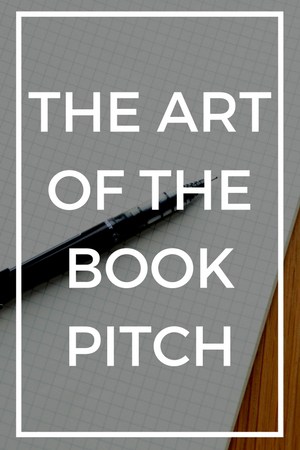
The Art of the Book Pitch
What’s the key to unlocking publishing doors? A great pitch! Earlier this year, we taught a live webinar on how to craft a pitch that’ll grab the attention of agents, publishers, booksellers, and readers. The recording is now available for everyone to view.
The Art of the Book Pitch
Learn the art and science of the seemingly impossible task of boiling your book down into 250 words or less.
- What is a pitch?
- Why is a pitch important?
- How do authors use pitches?
- Is a plot-heavy pitch good or bad?
- What is an elevator pitch?
- How is a pitch like a poem?
- How do authors use the pitch as a sales tool?
- And more!
During the webinar, we shared May K. Cobb’s winning pitch from the 2016 NaNoWriMo Pitchapalooza. You can read May’s pitch here, along with all the other entries, and see our feedback.
DO YOU WANT NOTIFICATION OF UPCOMING WEBINARS? LET US KNOW.
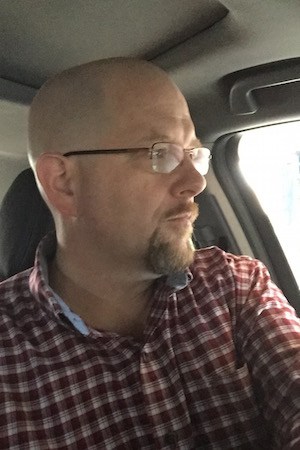
The University of New Mexico Summer Writers’ Conference: Counting Chickens
Last weekend, we presented at the University of New Mexico Summer Writers’ Conference in Santa Fe. We heard great pitches; we met fantastic writers. One of those writers blogged about the conference and pitching David. Thanks to R.A. Schneider and Beyond Belief for allowing us to share UNM 2016: Counting Chickens.
It reads like a fairytale: A man, afraid of pursuing his dreams, takes a leap of faith toward them. He attends The University of New Mexico Summer Writers’ Conference in Santa Fe, on the wings of his wife’s benediction, “I just want you to be happy.”
The conference goes well; beyond his wildest dreams, in every aspect. Keynote speaker Sandra Cisneros reaches into his chest and wrests convulsive tears. Workshop peers share trust and experience with genuine good will.
Reactions to his workshop writing sample place him in a state of shock: “Real-Deal” “Killer” “Reminds me of Bernard Cooper.” “At its best, reminiscent of ‘Glass Castle’.” “Can you get a full draft ready for the Master Class next year?” Surreal.
Friday night holds one last opportunity to extend the enchantment: “Pitchapalooza.” Billed as the American Idol of the literary world, lucky writers’ (names drawn from a hat) have one minute to pitch their book idea to an expert panel. The winner receives, along with a critique of their pitch, a package of prizes including introduction to an agent; a gateway to book deals.
“Why not,” he thinks? Then he remembers Mary. She flies in to Albuquerque Friday at 6:45 PM, in the heart of Pitchapalooza’s time slot.
An epic dilemma. Conflict in act two?
There has to be a way to pitch and pick her up. Think! Ask Mary to sit in the Albuquerque airport for three hours while he pitches? She would not be happy. Wasting her night would be bad enough, but there’s no guarantee his name will be drawn from the hat. Worst and best case scenarios both fail. An airport shuttle? $145 one-way. That’s out. Light Rail? Last train leaves for Santa Fe before her touch-down. Damocles laughs.
Forced to choose priorities, the pitch must wait. “Besides,” he tells himself, “my writing’s not that good; delusions of grandeur.” He sleeps, resigned to missing Pitchapalooza, while preserving the happiness of she who makes him happiest.
Friday. The man shuffles to the hotel breakfast bar, with its promise of self-made waffles, over-ripe fruit, and guests in Crocs, or worse — bare feet. What kind of people come to a breakfast bar in bare feet? He scans up from the man’s wiggling toes, past ragged shorts and sleeveless faux-frat T-shirt with a mock coat of arms: “Reed College: “Atheism. Communism.Free Love.” Barefootie is writing in a composition book, making a public show like all the wannabe’s; like the man himself has done. His eyes come to rest on the face, the wild shock of gray hair. He has to say something.
Carpe mother-fucking Diem.
“Excuse me, but Could I e-mail a pitch to you? I can’t make it to Pitchapalooza tonight. I have to pick up my wife in Albuquerque at the same time, and marriage comes before art.”
David Sterry, co-inventor of Pitchapalooza and one half of “The Book Doctors,” puts his pen down and looks at the man. “Wow…sometimes the universe conspires against you, eh? But sure. Here’s my card.” The man begins to thank Sterry for the opportunity, turning to leave.
puts his pen down and looks at the man. “Wow…sometimes the universe conspires against you, eh? But sure. Here’s my card.” The man begins to thank Sterry for the opportunity, turning to leave.
“So what’s your book about,” Sterry asks? The man stops dead, along with his heart, turning back.
“Seriously? You’ll let me pitch you?” He sits and pitches. It’s a flawed pitch. It’s a spiked change-up, a slider in the dirt, but he completes it in the allotted minute.
Sterry sits back, rakes his fingers through his electric mane, and exhales, eyes bugging…”Whoooo! That’s a hell of a story! That’s something one of the major houses would be interested in, if you can get it right. That’s got a lot of ‘Running With Scissors’ to it.”
Always an if. A huge if. Twenty-five years of “What if?”
But this is the second time this week published memoirists have looked him in the eye and said this: Potential for major publishing-house interest. If. Twice more the man tries to rise and thank the Book Doctor, attempting to minimize the breakfast imposition.
“No, wait…let me tell you how to fix the pitch.” Sterry spends 10 minutes teaching, more than the five minutes promised at Pitchapalooza, finishing with this: “…and when you’ve perfected the pitch, get it to me. Memoirs are our specialty… we have a huge network of agents, and it’s in our best interests to make you as successful as we can.”
The shock has returned. The man stands, shakes Sterry’s hand, and walks away to prepare for the last day of workshop. The magical, the enchanting University of New Mexico Summer Writers’ Conference. He warms to the thought of meeting his wife at the gate.
Sometimes the universe conspires with you. He is happy, and he will return. No “if.”
This post first appeared on Beyond Belief by R.A. Schneider.
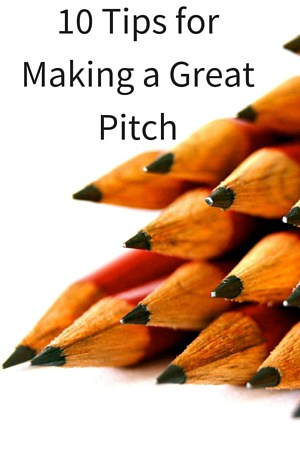
Top 10 Tips for Making a Great Pitch (with Bonus NPR Interview)
Your pitch is one of the most powerful and underrated arrows in your quiver as you attempt to scale the walls of Publishing Castle. Here are just a few helpful tips.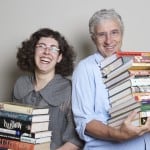
1. A great pitch is like a poem. Every word counts.
2. Make us fall in love with your hero. Whether you’re writing a novel or memoir, you have to make us root for your flawed but lovable hero.
3. Make us hate your villain. Show us someone unique and dastardly whom we can’t wait to hiss at.
4. Just because your kids love to hear your story at bedtime doesn’t mean you’re automatically qualified to get a publishing deal. So make sure not to include this information in your pitch.
5. If you have any particular expertise that relates to your novel, tell us. Establishing your credentials will help us trust you.
6. Your pitch is your audition to show us what a brilliant writer you are, it has to be the very best of your writing.
7.Don’t make your pitch a book report. Make it sing and soar and amaze.
8. A pitch is like a movie trailer. You start with an incredibly exciting/funny/sexy/romantic/etc. close-up with intense specificity, then you pull back to show the big picture and tell us the themes and broad strokes that build to a climax.
9. Leave us with a cliffhanger. The ideal reaction to a pitch is, “Oh my God, what happens next?”
10. Show us what’s unique, exciting, valuable, awesome, unexpected, about your project, and why it’s comfortable, familiar and proven.
Here’s a link to interview David did about pitching for NPR.




